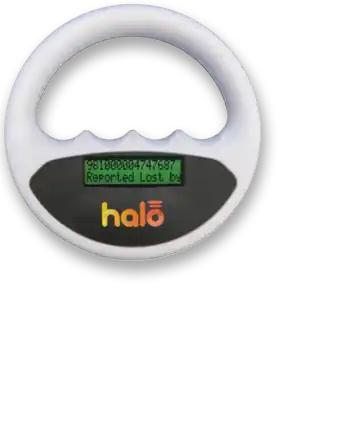A Tiny Celebration with a Big Impact
On August 15th, as you go about your daily routine, take a moment to consider a tiny hero that works tirelessly without complaint or much fanfare: the microchip in your pet. Yes, it’s National Check The Chip Day, a day dedicated to ensuring that these little lifesavers are doing their job—keeping your furry friend safe and traceable.
A Quick History of Pet Microchips
Before we dive into the nuts and bolts, let’s take a quick trip back to when pet microchips were just a futuristic dream. The concept began in the 1980s, when microchips were primarily used in technology and industry. It wasn’t until the 1990s that someone had the brilliant idea to use this technology to help reunite lost pets with their owners. Fast forward to today, and microchips are a standard part of responsible pet ownership.
But let’s be clear—microchips aren’t GPS devices. You won’t be tracking your dog’s every move like you would your Uber Eats order. Instead, these chips store a unique identification number that can be read by a scanner, leading back to your contact information in a registry. Think of it as your pet’s permanent ID card, except it’s safely tucked under their skin, not in a wallet they might forget at home.
Just like you wouldn’t ignore a ‘check engine’ light on your car, you shouldn’t ignore your pet’s microchip. Over time, contact details change—people move, get new phone numbers, or switch email addresses. And while your pet’s chip might be functioning perfectly, if it’s linked to outdated information, it’s about as useful as a VHS tape in the Netflix era.
National Check The Chip Day is a gentle reminder (okay, maybe a not-so-gentle nudge) to update your pet’s microchip information. Imagine the heartache of losing your pet and finding out their microchip is still registered to your old address three states away. That’s not the kind of surprise anyone wants.
How to Check and Update the Chip
You might be thinking, “This sounds great, but how do I actually check the chip?” Fear not, for the process is simpler than teaching a dog to fetch (well, depending on the dog).
- Get the Chip Scanned: Head to your local vet, animal shelter, or pet store with scanning services. They’ll wave a magic wand (okay, a scanner) over your pet, and voila, the microchip number appears.
- Look Up the Number: Once you have the number, visit a microchip lookup website like the American Animal Hospital Association (AAHA) Universal Pet Microchip Lookup Tool. This will show you which registry the chip is associated with.
- Update Your Information: Log into the registry and check your contact details. If they’re out of date, take a minute to update them. It’s quicker than explaining to your cat why they have to go to the vet.
 A Tiny Wonder with a Big Responsibility
A Tiny Wonder with a Big Responsibility
When you think of technology that changes lives, your mind might jump to things like smartphones, GPS systems, or perhaps even artificial intelligence. But one of the most unassuming and underrated pieces of tech out there is the humble microchip—a tiny marvel that quietly sits beneath your pet’s skin, acting as their silent guardian.
The Science Behind the Chip: Let’s take a closer look at what makes this little device so special. A microchip is composed of three main parts: a capacitor, a coil inductor, and a glass encapsulation. This setup is designed to be passive, meaning it doesn’t require a power source like a battery. Instead, it’s activated by a scanner that emits radio waves, which excite the chip’s components and cause it to transmit its unique ID number back to the scanner.
This means that your pet’s microchip isn’t constantly broadcasting like a radio station—it’s only ‘awake’ when it needs to be, which is why it can stay in place for years without needing any maintenance. The glass casing is biocompatible, so it doesn’t irritate your pet’s skin or cause any allergic reactions, making it both safe and effective.
A Safety Net for the Unexpected: Microchips are particularly important because they serve as a safety net for the unexpected moments in life. Pets are curious creatures, and sometimes that curiosity leads them on unplanned adventures—whether it’s chasing after a squirrel, slipping through an open gate, or simply wandering off during a momentary lapse in supervision. In those nerve-wracking moments, a collar with a tag can easily be lost or removed, but a microchip is there to stay.
Consider it an insurance policy you hope you never have to use. While it’s always best to keep a close eye on your pets and ensure they’re secure, life happens. When it does, that tiny chip becomes a lifeline, greatly increasing the chances of your pet being returned to you if they’re found.
A Lifesaver Across Species: Though we typically associate microchips with cats and dogs, they aren’t the only ones who benefit from this technology. Many other animals, from birds to horses, can be chipped as well. There have been cases of parrots flying the coop and being reunited with their owners thanks to a microchip, or even tortoises that managed to wander off only to be identified and returned years later.
In the world of animal rescue, microchips are invaluable. Shelters often scan animals as soon as they come in, and that quick scan can make the difference between an animal being labeled as a stray and them being reunited with their worried family. The impact of a microchip can’t be overstated—it’s a tiny device with a massive reach.
Responsibility Comes with Ownership: Of course, having a microchip implanted in your pet is only the first step. The real responsibility lies in keeping that chip’s information up to date. After all, the best technology in the world is useless if it’s connected to an old address or a disconnected phone number. It’s a bit like having a high-tech alarm system that’s never activated—you’ve got the potential for protection, but it’s not going to help unless you use it properly.
This is where National Check The Chip Day plays its crucial role. It’s a gentle reminder that, just like any other important aspect of pet care, maintaining your pet’s microchip is a long-term commitment. Your pet’s safety is directly tied to your diligence in keeping that information current. Think of it as an annual check-up, not for your pet’s health, but for their security.
The Future of Microchips: While microchips have been around for a few decades, the technology is continually evolving. Future developments could include chips with more advanced features, like temperature sensors or health monitors. Some researchers are even exploring the possibility of integrating GPS tracking into microchips, which would revolutionize pet recovery efforts. Imagine being able to pinpoint your pet’s exact location the moment they go missing—now that would be a game-changer.
Until then, the microchips we have today are doing an admirable job of keeping our pets safe. They may be small, but their impact is enormous, reminding us that sometimes, the best things really do come in small packages.
Celebrating National Check The Chip Day
Now, how does one celebrate National Check The Chip Day? It’s not the kind of holiday that calls for fireworks or cake (though, if you want to bake your pet a treat, who am I to stop you?). Instead, the best way to mark the occasion is by taking a few simple steps to ensure your pet’s chip is working and up to date.
Once you’ve done that, why not spread the word? Post about it on social media, tell your friends at the dog park, or even organize a chip-checking event at your local shelter. After all, the more pets that have their chips checked, the better.
And because no article would be complete without a dash of humor, let’s consider some of the lighter moments in microchip history. There’s the classic tale of the dog who turned up on a family’s doorstep years after running away, thanks to a working microchip. Or the cat that wandered off and was found across state lines, leading to a reunion that could only be described as "pawsitively" heartwarming.
In the end, National Check The Chip Day might not have the glitz of other holidays, but it’s a day that makes a world of difference for pets and their owners. So, take a moment to check that chip, update those details, and maybe even give your pet an extra belly rub for being such a good sport about it all.
Please Share our Content






 A Tiny Wonder with a Big Responsibility
A Tiny Wonder with a Big Responsibility








 "Sláinte!" is a traditional Irish expression used as a toast, equivalent to "Cheers!" in English.
"Sláinte!" is a traditional Irish expression used as a toast, equivalent to "Cheers!" in English.